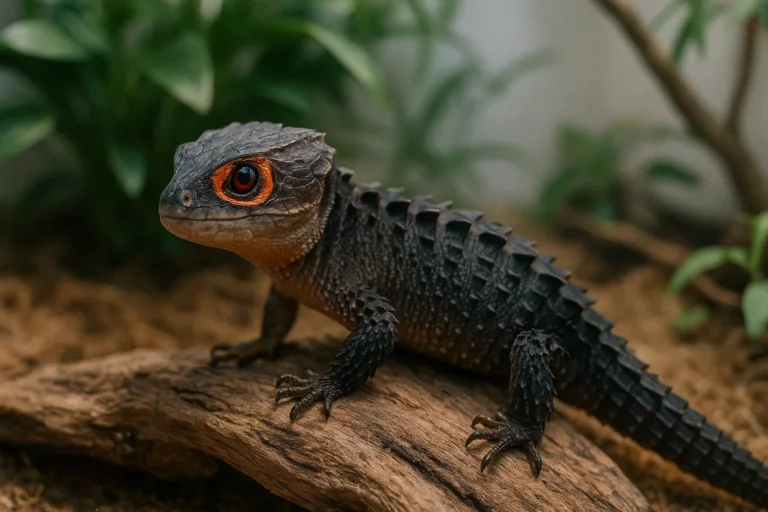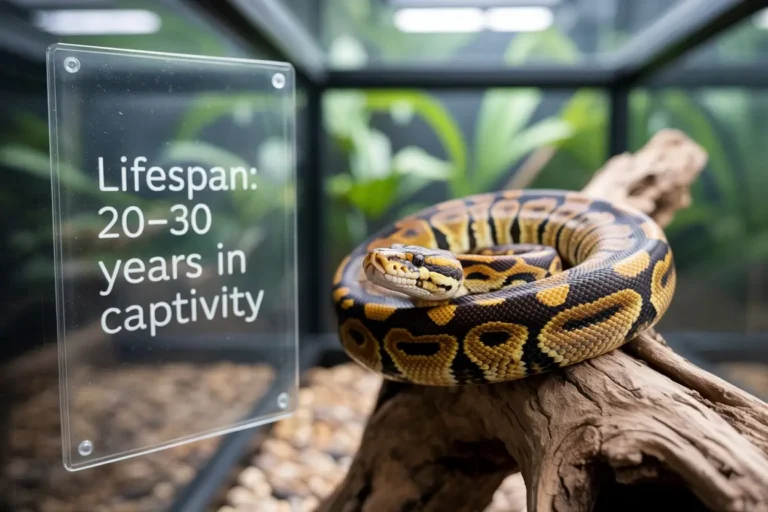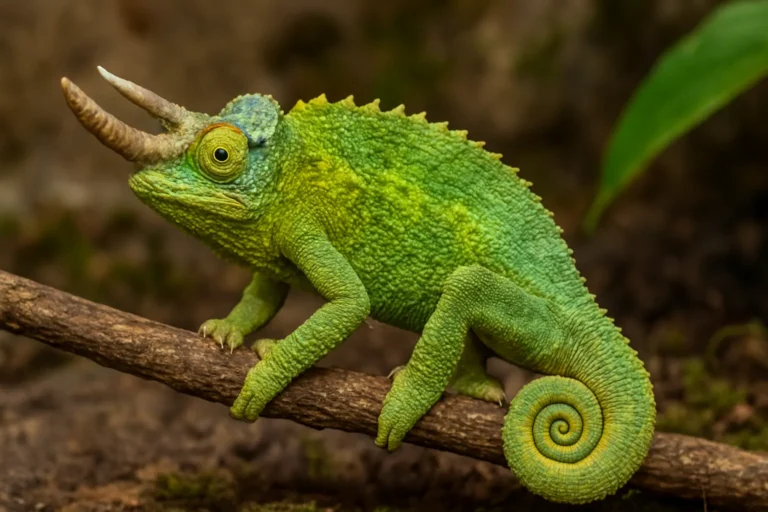Ball Python Habitat: Complete Guide to Setup the Perfect Environment
Creating an ideal habitat for your ball python is essential for its health, comfort, and overall well-being. These reptiles are solitary, nocturnal, and thrive in a warm, secure, and properly regulated environment. From enclosure size to temperature control, lighting, humidity, and cleaning — every aspect plays a role in mimicking their natural conditions.
Choosing the Right Ball Python Enclosure
A suitable enclosure is the foundation of a healthy ball python habitat. Hatchlings and juvenile snakes can be housed in 10–20 gallon tanks. As your snake matures, it will need more space — typically a 40-gallon breeder tank or larger is ideal for adult ball pythons. The general rule is that the enclosure should be approximately two-thirds the length of the snake. Since ball pythons are ground-dwelling and semi-terrestrial, prioritize floor space (length and width) over height.
You can choose between glass aquariums, PVC enclosures, or custom reptile tanks. All setups should have proper ventilation and a secure, escape-proof lid. Keeping more than one ball python in the same enclosure is not recommended as it can lead to stress, aggression, and health issues.
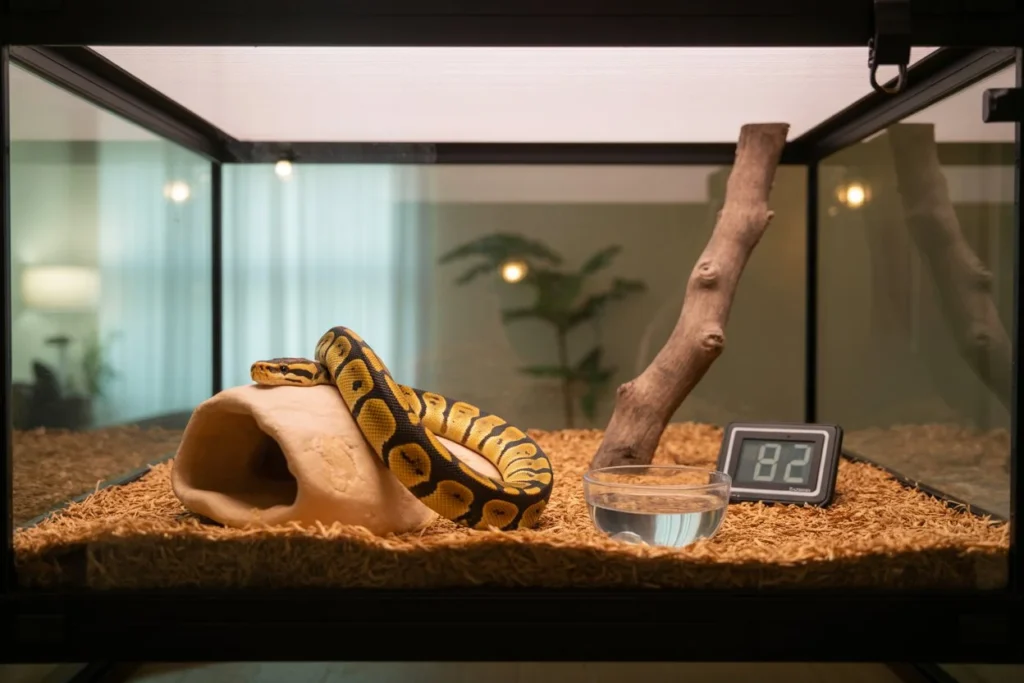
Habitat Setup and Accessories
Ball pythons are solitary and prefer a quiet, undisturbed environment. Ensure the habitat includes multiple hides (one on the warm side and one on the cool side), climbing branches (especially for males), and ground cover for burrowing. Mimicking their natural tendency to aestivate during dry seasons, providing dark and enclosed hiding spots is essential.
Avoid mixing species in the same enclosure. Ball pythons thrive best when housed alone.
Temperature Requirements
Being ectothermic (cold-blooded), ball pythons rely entirely on external heat sources to regulate their body temperature. A thermal gradient should be established within the enclosure:
- Warm side (basking area): 90–95°F
- Cool side: 75–80°F
- Ambient air temperature: around 80°F
- Nighttime drop (optional): not below 75°F
Use two thermometers — one on the warm side and one on the cool side — or a temperature gun for accurate readings. For heating, under-tank heaters or heat tape controlled by a thermostat are recommended to provide belly heat. Overhead heat lamps can supplement ambient temperatures, but they tend to lower humidity levels, so monitor conditions closely.
Avoid “hot rocks” as they can cause burns and are not safe for reptiles.
Lighting Needs
Although ball pythons are nocturnal and do not require UVB lighting for survival, moderate exposure to UVA/UVB can enhance immune health and promote natural behaviors. If you choose to use lighting:
- Provide 8–12 hours of UV light daily
- Use a timer to maintain a consistent day-night cycle
- Replace UV bulbs every six months, even if they appear to function
- Use infrared or nocturnal lights at night to avoid disrupting the snake’s sleep cycle
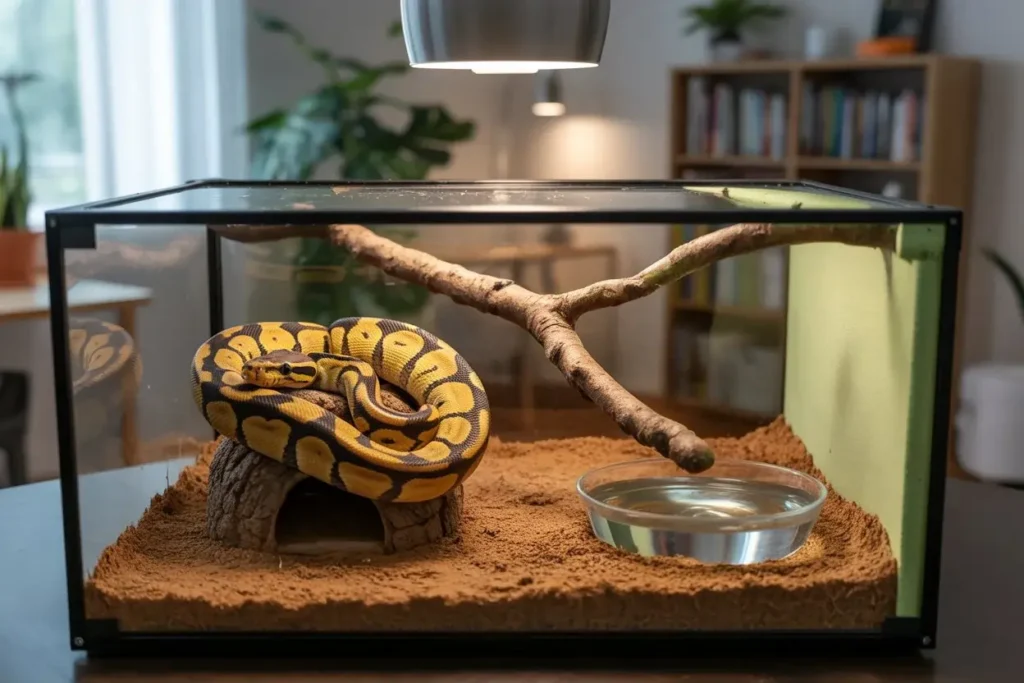
Humidity Control
Proper humidity is vital for hydration, respiratory function, and successful shedding. Maintain the enclosure humidity at:
- Ideal range: 50–60%
- During shedding: Increase to 70%
Use a hygrometer to monitor humidity daily. Natural substrates and frequent misting can help maintain proper levels, but avoid overly damp conditions.
Best Substrate for Ball Pythons
The right substrate helps maintain humidity, supports natural behavior, and makes cleaning easier. Suitable options include:
- Aspen shavings (replace weekly)
- Cypress mulch
- Coconut husk/fiber
- Repti-bark
- Paper towels or reptile carpet (less humidity control but easy to clean)
Avoid cedar and pine shavings as they contain harmful oils that can irritate the snake’s respiratory system and skin. If using loose substrate, feed your ball python in a separate enclosure to prevent ingestion of indigestible particles.
Cleaning and Maintenance
To prevent bacterial build-up and illness, clean the enclosure at least once a week:
- Move your ball python to a safe temporary enclosure.
- Remove all substrate, décor, and accessories.
- Disinfect the tank with a 3% bleach solution or a reptile-safe cleaner. Let it sit for 10 minutes.
- Rinse everything thoroughly and allow it to dry completely.
- Reintroduce fresh substrate and accessories before returning the snake.
Always wash your hands before and after handling your ball python or anything inside its habitat to prevent disease transmission.
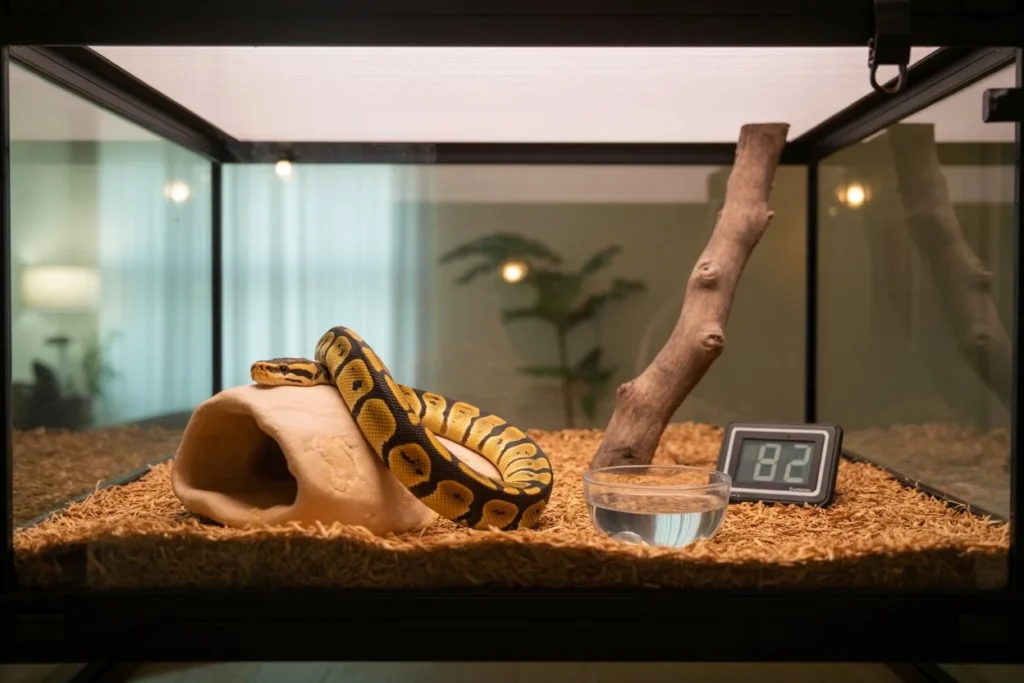
Behavioral Traits and Lifestyle
Ball pythons are docile, slow-moving, and known for their unique defense strategy — coiling into a tight ball with their head tucked in the center when threatened. In the wild, they are ambush predators and often shelter in burrows or other cool, moist underground hideouts. Males may display more semi-arboreal behaviors, while females prefer staying on the ground.
They are not migratory, and during extreme heat or dry conditions, they enter a dormant state called aestivation. Their calm demeanor and manageable size make them excellent pets, especially for beginners.


